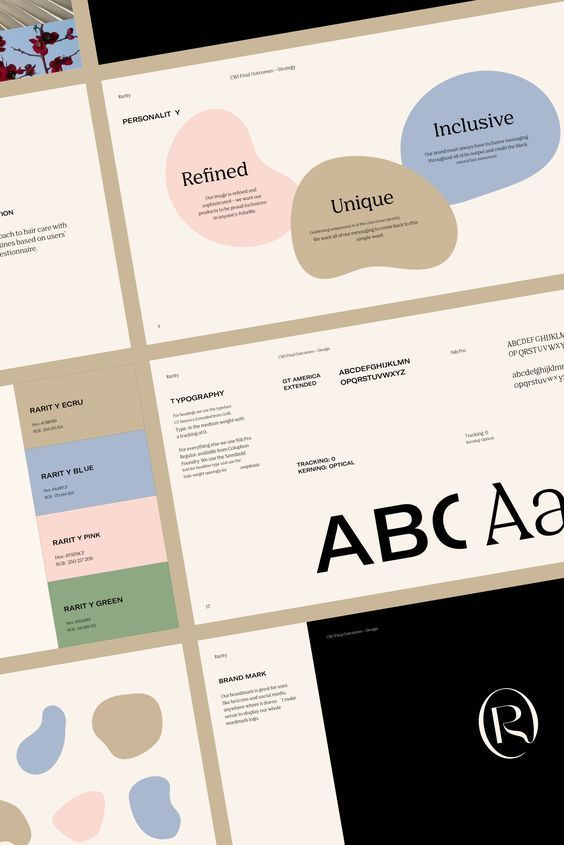Transform Your Fashion Label: Consistent Branding Tips
Brand consistency is the key to the success of a fashion brand because it makes it easily recognizable. In this article, we will provide tips to maintain a consistent branding identity in a fashion brand.
What is fashion branding?
Fashion branding refers to the process of creating and promoting an identity that identifies and distinguishes a brand. Effective branding helps fashion brands communicate their values, mission, and unique selling proposition to their target audience.
Branding involves the use of different strategies to build a distinctive and recognizable identity that helps a brand differentiate itself from competitors, resonates with customers, establishes trust and loyalty, and drives sales.
Fashion branding comprehends the use of various elements such as the brand’s name, logo, colors, typography, packaging, and marketing campaigns.

Why is brand consistency important?
In the context of fashion, maintaining brand consistency refers to maintaining a unified and cohesive message and brand image across all channels.
Inconsistent branding can lead to confusion and even damage the overall brand identity. Consistent branding implies using the same identity elements, messaging, and visual language in all marketing efforts.
There are various benefits of brand consistency besides ensuring authenticity and reliability to potential customers. Some of them include:
-
Increasing recognition
Customers will better recognize your brand if the branding is cohesive. When a label presents a coherent brand story, it creates a sense of familiarity with the target audience that helps increase brand recall. Brand consistency is important as customers are more likely to choose a company that they are familiar with and can easily remember.
-
Establishing credibility
A cohesive image helps establish brand authority, credibility, and professionalism. By always presenting a clear message a brand shows its expertise in its field. The process to create brand consistency is essential to developing long-term relationships with customers.
-
Building awareness
Brand consistency builds awareness and can help reach a wider audience, by making brands more recognizable and easier to remember.
-
Creating trust and loyalty
Brand consistency ensures trust by establishing a clear identity that customers can rely on. When customers see a uniform brand image across different channels, it creates a sense of trustworthiness which can lead to customer loyalty.
-
Differentiating from competitors
In today’s crowded marketplace, presenting a uniform image can help to stand out in opposition to its competitors. A successful brand understands that.
-
Improving marketing efficiency
When clear brand guidelines have been established, it becomes easier to establish consistency, which may improve marketing efficiency and ultimately increase the impact of advertising.
-
Increasing revenue
Maintaining brand consistency in marketing can increase revenue for a brand because it can help to build loyalty among existing and potential customers, leading to an increase in sales and revenue. Besides that, when brands are cohesive they can improve efficiency and reduce costs by making it easier to create and distribute marketing materials that are accordingly to the company’s image.

How to establish and maintain brand consistency?
Having a consistent brand identity is fundamental for the success of a fashion business, but how can a brand do it? There are some concepts to consider to establish and maintain consistency and they are:
-
Developing a clear identity that includes the brand’s personality, values, mission, and USP.
-
Developing a brand style guide that should serve as a reference point and outline the brand’s visual and messaging elements such as logo, typography, color palette, or tone of voice.

-
Having uniform visuals and messaging across all channels like social media, website, and advertisements.
-
Educating your team on how to maintain and build brand consistency and dispose of the marketing assets so they can be easily accessible to everyone on the team.
-
Monitoring social media and other channels to see if your business is constantly being promoted by influencers or ambassadors.
-
Don’t forget about brand evolution. It’s important to be homogeneous but, if you need to change the approach, make sure that changes are made with intention and are well communicated to customers.
Here are some tips on on how to maintain uniform branding in fashion.

1) Determine your brand values
To get consistent brand recognition, determining core brand values assumes great importance. This way, defining a brand mission statement and purpose and understanding why a certain brand exists and what problem it solves for its clients is indispensable. There are some steps labels can take to determine their brand core values, and they are:
-
Define your target audience
Consider the target customer and what values give them positive emotions and matter to them so you can identify relevant values that resonate with your target audience and build customer trust.

-
ANALYZE THE COMPETITORS
Analyze the positive emotions other brands sell and the mission they stand for. This identification will help you choose values that are unique and will make clients recognize your brand.

-
Look at your label’s history
Look at your label’s history to identify brand values that are deeply rooted in your brand identity.
-
Prioritize your values
After identifying brand values, prioritize them based on their relevance to your label and the public.
Once all values are identified, communicating them is essential to establish brand consistency.
2) Develop a consistent brand positioning to communicate your USP
The Unique Selling Proposition (USP) refers to the unique benefit or advantage that a product or brand offers to customers. It is a great part of the brand consistency strategy because it is used to differentiate a label from its competitors. For example, Apple’s USP “Think Different,” emphasizes its innovative approach to technology.
Brand consistency is essential to effectively communicate the USP and make an easily recognizable brand. To develop a uniform USP a company must:
-
Identify what target consumers value most in a product and their buyer journey.
-
Determine what makes your business unique, as this is the foundation of your positioning.
-
Develop a clear, concise, and memorable positioning statement that communicates your USP.
-
Ensure your brand messaging is homogeneous in all your marketing efforts to ensure brand recognition.
-
Use visuals to reinforce your brand positioning.
-
Keep an eye on the competition to ensure that your positioning remains unique. Remember you can always adjust positioning to stay relevant as this is part of brand evolution.
3) Unify Messaging and visual elements
Consistent brand messaging and the use of the same visual elements are essential to ensure brand consistency and build labels customers recognize easily.
To better communicate your consistent messaging and on-brand visual elements, you can:
-
Define a clear voice and tone that reflects your business personality. This includes using the same brand message, language, and style across all channels.
-
Define a persistent photography style that reflects your brand identity elements.

-
Use a steady color palette that articulates brand visual elements. This includes using the same colors to establish brand consistency.

-
Use the same visual elements and imagery to make a more easily recognizable brand.
-
Conduct regular audits of your company messaging and core elements to make safe everything is aligned with your identity.
By using cohesive imagery and messaging, you can create a strong identity that builds recognition over time.
4) Create brand guidelines to capture your identity
One can unify messaging and visual elements by creating brand guidelines, which are a set of standards that define the on-brand visual elements. A brand style guide helps increase brand perception by creating brand consistency across all marketing assets. They serve as a reference for designers and marketers to maintain a brand recognizable and coherent.
A brand guideline normally includes the following key elements:
-
Logo guidelines include sizing, spacing, and placement;
-
A color palette that is used consistently;
-
Typography guidelines in brand communications such as headings or subheadings.
-
Imagery guidelines for photography and illustrations include image composition, filters, and editing.
-
The tone of voice guidelines includes language, style, and messaging.
-
Examples of how guidelines are applied across various marketing materials like social media and advertising.
There are many benefits of brand consistency, so building guidelines to capture and ensure a cohesive identity is crucial for the company’s success. That is why you must make sure the team knows the brand guidelines and follows them.

5) Keep your brand consistent across all channels
There are different channels in the fashion industry used to reach and engage with potential customers and create a consistent experience. Some of the most common encompass:
-
Retail stores
Most labels have their physical retail store or sell in third-party retail stores.
-
E-commerce websites
Selling products online through e-commerce websites or online marketplaces.
-
Social media platforms
Platforms like Instagram or Facebook make it easier to showcase products, collaborate with on-brand ambassadors and present a cohesive brand voice.
-
Fashion shows
The latest collections are shown at fashion shows attended by industry professionals and influencers.
-
Print advertising
Advertising in magazines helps reach a wider audience.
Keeping all these channels updated and cohesive makes it easier for clients to recognize your brand promise, aesthetic, and values which will ultimately guide business growth.

Deliver a consistent customer experience
The customer experience refers to the overall experience a customer has when interacting with a fashion label, from the initial stage through the purchase and post-purchase process.
Delivering a consistent customer experience is essential for building a strong brand identity. A positive customer experience can lead to higher sales. That is why thinking about the whole sales journey, understanding customer expectations, and the various ways they can interact with the company is a must.

6) Assemble and organize all marketing assets
Brand marketing assets include all the content used in the promotion of a fashion business and may include product images and videos, identity assets, lookbooks and catalogs, social media marketing activities, team member marketing, and influencer collaborations.
Organizing marketing collateral in fashion is important as it maintains brand consistency, saves time by allowing one to quickly find the documents needed, increases productivity, and can save money on the creation of new brand marketing tools when there are already existing ones.
To be certain all marketing materials are easily accessible a brand must:
-
Create a centralized location for all assets and confirm all the team has access to it.
-
Categorize the materials into different folders based on their type and use invariable file names;
-
Regularly update everything to secure it reflects even minor changes in your identity.
-
Consider using digital asset management software to organize and manage all your assets in one location.

Keep a consistent schedule for your marketing
Keeping a consistent schedule for marketing certifies that you are consistently reaching your customers. There are some steps you can take to maintain consistency in the marketing schedule, such as:
-
Developing a marketing plan;
-
Creating a content calendar for blog posts, email newsletters, etc;
-
Setting deadlines for each marketing task;
-
Reviewing and regularly adjusting your marketing plan.

7) Continuously monitor and adjust your brand identity elements
The last step you need to take is to continuously monitor and adjust your brand consistency and identity elements. There are various ways to do it, such as:
-
Setting up a system to monitor and track brand consistency in the identity elements across all marketing channels and adjust deviations from your brand guidelines;
-
Collecting feedback from customers and using it to adjust your brand identity as necessary to get overall customer satisfaction;
-
Keeping an eye on industry trends and adapting your brand consistency accordingly;
-
Continuously experimenting and refining different identity elements;
-
Working with experts to verify your brand consistency and knowing how to effectively communicate your brand’s USP.
You must always adjust identity elements to maintain strong brand consistency in today’s crowded fashion industry.

Make your brand consistent across all branding efforts
Brand consistency matters if you want to create brand recognition and make sure your branding is relevant.
Adhere now to Epiprodux if you want to know more about brand consistency and how to better achieve it!





